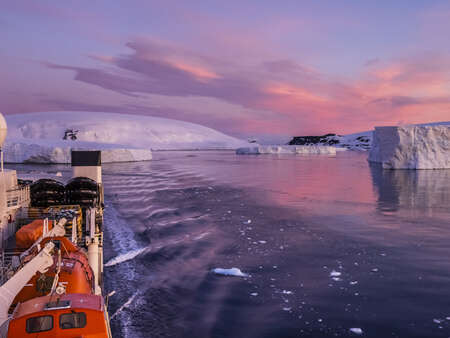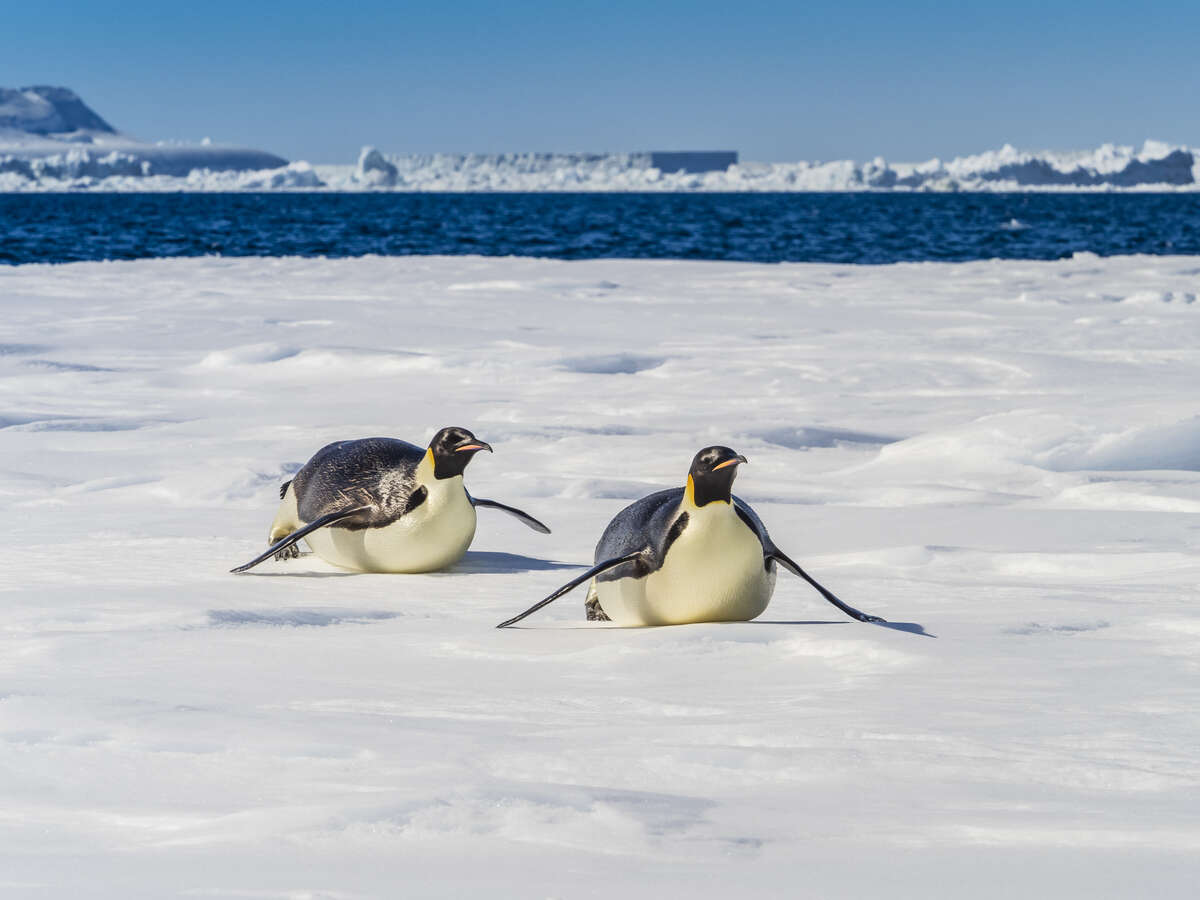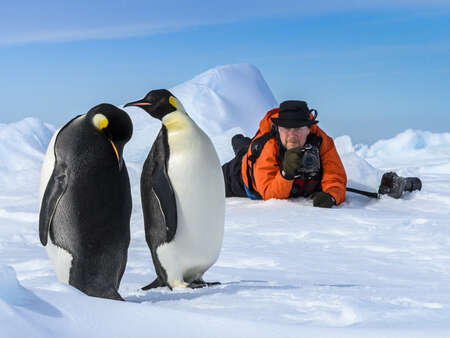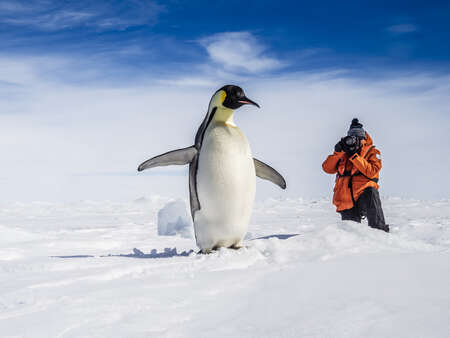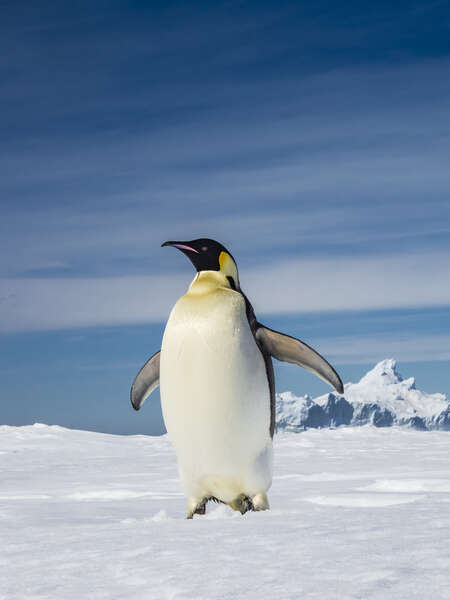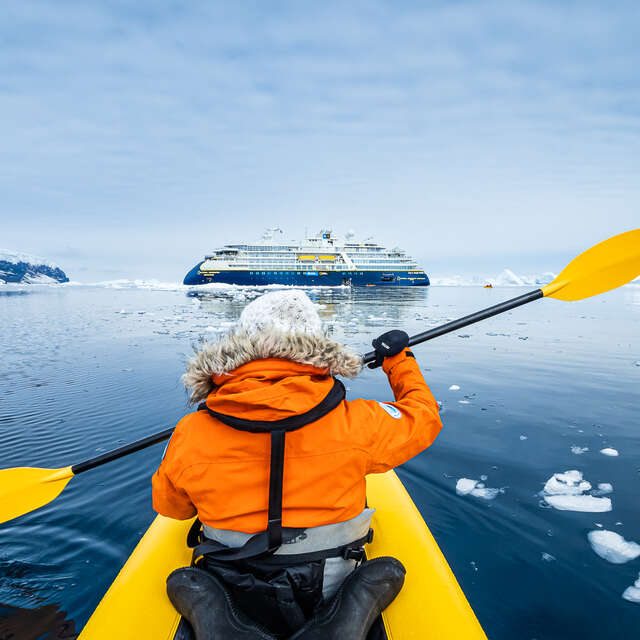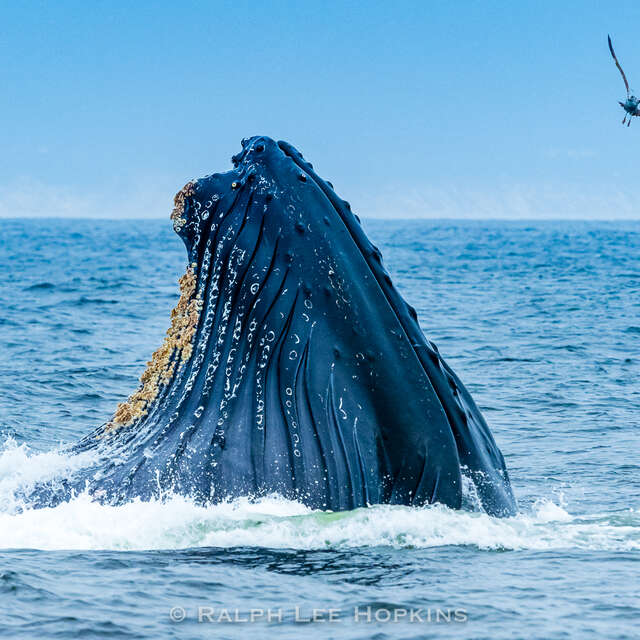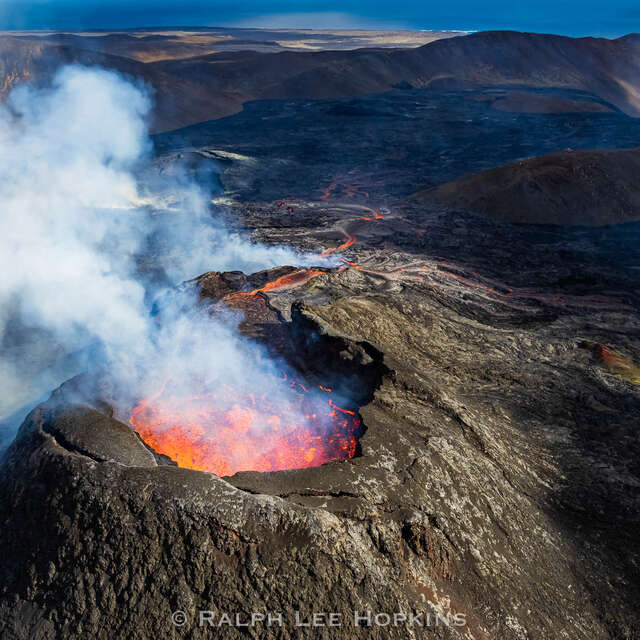It might sound strange, but the great pause during this global pandemic has me dreaming of ice, an infliction known in the business as Polar Fever. If you’re lucky enough to have traveled to the polar regions to experience the vast icescapes, you’ll know exactly what I mean.
I’m addicted to ice, whether pack ice (frozen seawater) or icebergs (calved from glaciers), and the thrill of exploring for the animals that live in these extreme habitats. My dreams have me going back through my archives editing images from pre-pandemic trips to the ice with Lindblad Expeditions and National Geographic. With all the cancellations in 2020, who knew it would be almost two years before we can return to the frozen ends of the Earth.
Sunrise comes early at 64˚ south of the equator. The National Geographic Explorer navigates through giant tabular icebergs in the Weddell Sea that would dwarf even the largest Costco. Our target was to find the ice edge along the coast of Snow Hill Island. Our goal? To find the world’s largest living species of penguin, the Emperor Penguin.
Show Hill Island is known for its breeding colony of Emperor Penguins, and where there is shore-fast ice (sea ice connected to land), there’s a good chance of finding Emperors coming and going from the colony.
Luck was with us that day. Ahead of the ship we spied tiny dark dots lined up along the ice edge. The ship approached slowly, pushing into the solid ice a few hundred meters away. Bingo! We could see clearly now with our naked eye, a grouping of Emperor Penguins were resting on the ice. The ships’ gangway was quickly lowered and, after testing the ice for safety, we walked ashore for a closer look at these magnificent flightless seabirds.
Now you would think the penguins would move away seeing dozens of red coat travelers joining them on the ice. To our surprise, the penguins were curious and instead they approached us, making for the perfect wildlife encounter. Some walked upright, while others slid on their bellies propelled by their flipper and feet, a behavior known as “tobogganing.”
As a dedicated Olympus photographer, I normally work with two camera bodies. For this situation I carried the OM-D E-M1X and 12-100mm medium telephoto zoom, along with the OM-D E-M1 Mark III with the 7-14mm wide-angle zoom. This go-to combination gives me a lot of versatility without changing lenses.
Laying down on the ice for a low-angle viewpoint, two curious penguins came directly toward me then stood up. Standing almost 4 feet tall, emperors are the tallest penguins in the world. Looking at me quizzically, I wondered if they’ve ever seen humans before.
Seemingly bored, they started preening their feathers, as if to ignore me. Penguins preen to insulate themselves by trapping air in their feathers. And, when they return to the water, the trapped air is released as tiny bubbles helping them swim faster by decreasing water resistance, making them more hydrodynamic.
Strangely, there was one penguin that I spent the most time with. Not knowing the gender, I’ll say it was a female who took a particular interest in me. It was like she adopted me, acting like a super model penguin, showing me different poses while moving closer and closer to me as I laid on the ice. She gave me the gift of her time, allowing me to work my compositions, adjusting f/stops and exposures.
When photographing penguins, getting down on their level, eye-to-eye, or even laying on the ice is key. Getting low does two things: it makes you less intimidating by not towering over the penguin, and also the low perspective simplifies the background. Also, including people for scale, or in this case, having a person in the background makes the world’s largest penguin larger than life.
Exposure is critical. It’s a white world on the ice, so you have to fool your camera so your images are not under-exposed. Remember, your camera’s light meter is biased to change what is white, or bright, to middle-gray (like a gray card back in the film days). It may sound counterintuitive, but you must adjust on the plus side of exposure compensation, and purposely over-expose images dominated by a white background. That said, be careful not to go too bright as to blow out the detail in the penguin’s feathers.
Once-in-a-lifetime situations can be overwhelming, even for experienced photographers. The key is knowing your equipment. In practice, I go through a mental checklist so that I capture the best images possible, both technically and with compositional variety. It’s a day I’ll never forget!
Compositional Tips
- Shoot a variety of compositions, both horizontal and vertical
- Get low for eye-level viewpoint and to simplify the background
- Vary the position of the penguins in the frame (rule-of-thirds)
- Vary f/stop to control the depth-of-field
- Go wide to show the icy environment
- Remember to make a close portrait
Camera Settings
- Shoot in manual mode with Auto ISO
- Set f/stop and shutter speed (ISO will adjust)
- Adjust exposure compensation to plus one (+1)
- Review test image and adjust exposure as necessary
- Lock focus on the penguin’s eye then re-compose
Instagram: @ralphleehopkins
Ralph Lee Hopkins travels to the world’s wild places with Lindblad Expeditions and National Geographic. As Director of Expedition Photography for the National Geographic fleet he has photographed expeditions from the Arctic to the Antarctic and points in between over the last 30 years.
